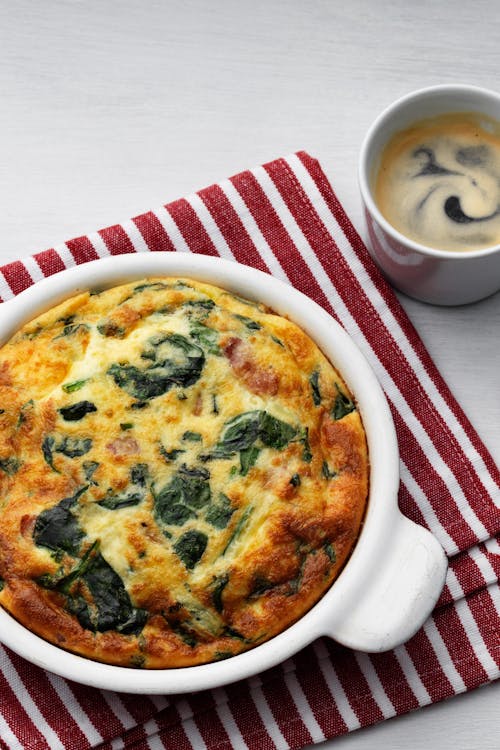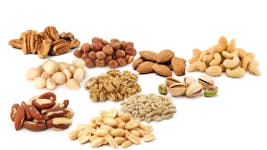How to make a low-carb or keto diet cheaper
Some low-carb foods are expensive and many people believe a low-carb or keto diet has to be expensive. But that’s not true. You don’t need expensive ingredients. You can eat totally delicious and healthy low-carb meals that are super cheap.
In this guide you’ll quickly learn how. Because with a little planning and some smart shopping, just look at how much you could save.
Do this to save money

1. Plan
Planning your low carb meals and shopping is a great way to ensure meals are organized for the week ahead. You get to buy only what you need, and you won’t be relying on emergency takeaways. See what’s in your pantry and fridge already, then plan meals that will use these ingredients to stop food wastage.
Planning shopping lists helps you stop unnecessary spending and impulse purchases. Did you know that each week we spend on average 17% of our grocery budget on impulse purchases?
Also, bargain deals may appear to be good value. But naturally you save even more if you don’t buy additional foods at all.
Make a shopping list, and stick to it. Preferably only buy the things you need.
2. Shop



Buy cheaper alternatives
Some low carb foods are ridiculously expensive, but here are plenty of cheaper options which are just as delicious, simple and healthy.
- Buy regular cheese, not specialty cheeses that can be pricey. Don’t buy preshredded cheese, buy in bulk and shred/grate it yourself.
- Make your own coleslaw and avoid expensive ready-made coleslaw. Coleslaw is incredibly easy and cheap to make yourself in your food processor (recipe).
- Buy simple meats, not specialty cooked meats from the deli. Cooked meat can be great for a quick simple meal, but stick to the less exotic and cheaper meat such as cooked roast beef or chicken drumsticks.
- Put back the kale that can cost a fortune and buy other leafy greens that are just as nutritious but much cheaper.
- Stop buying nuts because they can soon add up, especially macadamias. Walnuts, almonds and brazil nuts are great alternatives or stop buying them altogether. Low-carb nuts guide
- Buy almond meal, not almond flour which can be expensive. Almond meal is cheaper and interchangeable in most recipes. You can even make your own ground almonds in your coffee grinder.
- Buy avocado oil not avocados when they are out of season and expensive.
- Buy frozen or canned fish rather than fresh which can be a real budget breaker, especially salmon. Canned tuna and mackerel are cheap handy snacks to have in the pantry.
Buy the best quality you can afford
Organic vegetables have less pesticides, grass fed meat has superior nutrition and free range eggs are nutritious but expensive. Unfortunately these are simply out of the reach for those who need help the most, and who are living to a strict grocery budget.
For someone living on a diet of sodas, fries and fast food, swapping to regular eggs, regular vegetables and regular meat will still have an enormous impact on their health. The single most important factor to improve your health, is to cook from scratch, at home.
Buy free range eggs as often as your budget will allow, but regular eggs will still be a better breakfast option than high-sugar cereals.
Buy in season
Buy in season and eat in season. Many vegetables can be bought when they are cheap and frozen. There are many cheap low-carb freezer staples such as berries, spinach and cauliflower which are just as nutritious as fresh but much cheaper.
Buy bargains
Buy cheaper store brands, buy discounted food near its expiry date, buy misshapen vegetables, buy food with damaged packaging, buy from your local farmer’s market, and buy regular food not specialty foods from the deli counter.
Buy in bulk
Find a local butcher, and buy in bulk. Buy canned and frozen goods when they are discounted. Buying in bulk often attracts extra discounts and you know you will have a pantry and freezer full of ingredients just waiting to be turned into a meal.
Buy organ meat
Organ meat is incredibly cheap and very nutritious.
Liver gram for gram provides more nutrients than almost any other type of meat. If you don’t like eating liver, use it diced finely in a dish such as chilli to bulk up the ground beef. Liver is cheap and incredibly nutritious.
Buy cheaper cuts of meat
Don’t buy the expensive lean meats, buy the cheaper fatty ground meat, buy the fatty pork chops, and buy the cheap chicken that still has the skin on.
Buy the cheap casserole/stewing meat and learn to love your slow cooker. It will transform cheap cuts of meat into tender meal.
Find a local butcher who sells pork skins to make your own crackling which is a perfect low carb snack.
Use bones from a roast dinner or from the butcher to make bone broth.
3. Cook



Cook once, eat twice
Leftovers are the champion of low-carb living. Cook extra portions and only go back for seconds if you’re still hungry. Leftovers are a fantastic way to eat an affordable healthy low-carb meal for lunch or dinner.
If there is a special discount in the grocery store, buy in bulk, cook in bulk, then freeze extra portions. You will have a happy freezer full of cheap healthy low-carb ready meals.
Cook dinner at home
Eating out can be expensive - especially if you want to eat healthy. Did you know that Americans now spend 50% of their food budget eating out? Cook at home with real food instead. You will eat healthier, skip the extra drinks, desserts and coffees, and save a lot of money.
Cook simple meals
Simplicity is the key to healthy cheap meals. Each low-carb meal should have some good protein, nonstarchy vegetables and plenty of healthy fats.
Meals don’t have to be complicated, in fact simple meals are easier to make, cheaper, and will encourage you to cook more often.
Find our best low-carb recipes here
4. Eat



Eat more fat
Add more healthy fats to your low-carb meals and you won’t want to eat so much. Once you become fat adapted your appetite reduces and so does your meal size. Healthy fats at each meal will keep you sustained and fuller for longer.
Add plenty of cheese and herbed butter to your steak, olive oil on your salad, and coconut cream to your yoghurt and you will only eat a portion of an equivalent low fat meal.
Eat more eggs
Consider adding more eggs to your diet. Eggs are a great source of protein, fats and other nutrients. They are a relatively inexpensive protein source, much cheaper than meat for example. Oh, and eggs are delicious – just check out these awesome recipes!
Fast intermittently
Once you eat low carb you will eat less, in fact you will start to intermittently fast sometimes without realising. When you eat low carb, your appetite is under control and you no longer eat the volume of food you once did.
Planned intermittent provides numerous health benefits and allows you to eat less and save more money.
2. What to stop doing



Stop snacking
Snacks are unnecessary and expensive. Snacks can easily add up to a fourth meal. If you snack often, think about the meals you are eating. If you are still hungry between meals, maybe you need to be adding more healthy fats to keep you fuller for longer?
Are you eating out of habit? Boredom? When you eat low-carb full fat meals, hunger will be reduced and you often can avoiding snacking altogether.
Stop food wastage
When you plan meals ahead, think about what you are buying and when it will be eaten. It is estimated an average household throws away approximately 25% of the food and drink it purchases.
Stop wasting food, stop impulse purchasing, stop throwing away ugly or misshapen produce, stop throwing away leftovers.
Look in your fridge and pantry before you go shopping and cook the food that will expire first. Save even small amounts of leftover vegetables and add include them in a frittata or soups.
Stop buying drinks
Drinks soon add up each week, so instead of buying expensive special coffees, make coffee at home or work with full fat cream.
Stop buying diet drinks, smoothies, juices and bottled water. Instead start drinking tap water and save big time. Or make flavoured water yourself by adding a squeeze of lime juice, berries or mint leaves for a fresh natural refreshing drink.
Avoid temptation
Consider buying your groceries online to avoid temptations in store. When you are at the supermarket, avoid the aisles that have temptations such as confectionery, snacks and the bakery.
Don’t visit the supermarket when you’re hungry.
This is a tough one, but you may want to avoid visiting with your children. Pester power (the nag factor), product placement at children’s eye level and advertising directly aimed at children is well known to increase your spending. Shopping without kids will likely be cheaper and quicker.
Alternatively, when shopping with children, avoid the aisles with temptations and shop the perimeter instead. Take the opportunity to teach your children about making good choices and simple budgeting skills. Say no and be firm. Children have a sixth sense to discover your weakness.
Stop buying lunch – bring leftovers
Buying lunch every day is incredibly expensive. Invest just a few minutes each morning to make your own.
Add cold roast meat to a huge low-carb salad, add cheese and olive oil and you have a wonderful cheap healthy meal.
Go for a walk in your lunch hour and eat your nutritious low-carb dinner from last night.
Stop buying processed food
Processed food is expensive. Stop paying the price for convenience and start cooking at home to start saving money.
Stop buying ready-to-cook vegetables, and wash or peel them yourself. It only takes a few extra minutes.
3. How much money could you save?



Short term savings per person per day
So, how much would you save by following these tips? It’s hard to calculate this accurately, but the table below shows you how much you might spend per person per day following a standard American diet (SAD), a LCHF meal plan using expensive ingredients, and a LCHF meal plan by making smart choices.



Long term savings of low carb living
By eating low carb you will clearly spend less at the dentist and likely less at the pharmacy. You will probably have smaller medical bills and health insurance premiums might even be cheaper.
It is not uncommon for medication to be reduced or even stopped when following a low-carb lifestyle, e.g. when reversing type 2 diabetes.
Finally, there’s no price on living a healthy lifestyle that can result in weight loss, stable moods, reduction of risk factors of most modern diseases, improved insulin sensitivity, better blood sugar control, decreased pain and inflammation and the result of all that, simply feeling good.
4. Cheap low-carb recipes and meal plans
By planning ahead, spending your food budget wisely, cooking at home and eating smarter, you can make low carb cheaper!
Want to start saving money right away? Try this guide to our most super cheap low-carb meals. They’re all healthy and affordable.
Examples
About
This Diet Doctor guide was written by Libby Jenkinson, a registered pharmacist, mother of 3 children, and the founder of ditchthecarbs.com, the leading low-carb website in New Zealand and Australia. Editing by Dr. Andreas Eenfeldt.
More
Practical low-carb guides
Visual guides
































